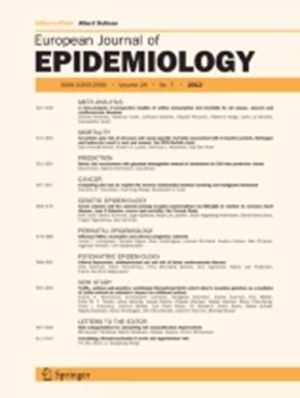The role of lipids in the effect of APOE2 on cognitive function: a causal mediation analysis.
IF 5.9
1区 医学
Q1 PUBLIC, ENVIRONMENTAL & OCCUPATIONAL HEALTH
引用次数: 0
Abstract
Extensive research has examined the direct effect of APOE alleles on cognitive decline. However, there is limited investigation into the effect of APOE that is explained or mediated through molecular pathways, such as lipids. In this study, we performed a causal mediation analysis to estimate both the direct effect of APOE2 and its indirect effect through 24 lipid species on cognitive function, measured from the digital Clock Drawing Test (CDT) in 1228 Long Life Family Study (LLFS) participants. Results showed that APOE2 carriers completed the CDT significantly faster compared to common APOE3 carriers. Primary analysis identified two lipids (CE 18:3 and TG 56:5) protectively mediated the effect of APOE2 on cognitive function, resulting in shorter CDT think-time, ink-time, and total-time; conversely, TG 56:4 deleteriously mediated the effect of APOE2, resulting in increased ink-time. Secondary analysis yielded consistent results and identified four additional significant lipid pathways (DG 38:5, TG 51:3, TG 56:1, TG 56:2) that mediated the effect of APOE2. The combined indirect effect in the primary analysis contributed 15%-30% mediated proportion on CDT times, though such mediated proportion did not reach statistical significance. Overall, our analysis identified seven lipid species that significantly mediate the effect of APOE2 on cognitive performance. These lipids represent distinct lipid pathways, including both protective and deleterious mediation effects. Our findings offer insights for new therapeutics targeting those lipids to enhance the protective effects of APOE2 on cognition.脂质在APOE2对认知功能影响中的作用:因果中介分析。
广泛的研究已经检验了APOE等位基因对认知能力下降的直接影响。然而,对APOE的影响的研究有限,它是通过分子途径(如脂质)来解释或介导的。在这项研究中,我们通过对1228名长寿家庭研究(LLFS)参与者的数字时钟绘制测试(CDT)进行了因果中介分析,以估计APOE2通过24种脂质对认知功能的直接影响及其间接影响。结果表明,APOE2携带者完成CDT的速度明显快于普通APOE3携带者。初步分析发现,两种脂质(CE 18:3和TG 56:5)保护性地介导APOE2对认知功能的影响,导致CDT思考时间、墨水时间和总时间缩短;相反,TG 56:4有害地介导APOE2的作用,导致油墨时间增加。二次分析得出了一致的结果,并确定了另外四个重要的脂质途径(DG 38:5, TG 51:3, TG 56:1, TG 56:2)介导APOE2的作用。初步分析中联合间接效应对CDT次数的中介比例为15%-30%,但该中介比例未达到统计学意义。总的来说,我们的分析确定了七种脂质,它们显著调节APOE2对认知表现的影响。这些脂质代表不同的脂质途径,包括保护性和有害的中介作用。我们的研究结果为针对这些脂质的新疗法提供了见解,以增强APOE2对认知的保护作用。
本文章由计算机程序翻译,如有差异,请以英文原文为准。
求助全文
约1分钟内获得全文
求助全文
来源期刊

European Journal of Epidemiology
医学-公共卫生、环境卫生与职业卫生
CiteScore
21.40
自引率
1.50%
发文量
109
审稿时长
6-12 weeks
期刊介绍:
The European Journal of Epidemiology, established in 1985, is a peer-reviewed publication that provides a platform for discussions on epidemiology in its broadest sense. It covers various aspects of epidemiologic research and statistical methods. The journal facilitates communication between researchers, educators, and practitioners in epidemiology, including those in clinical and community medicine. Contributions from diverse fields such as public health, preventive medicine, clinical medicine, health economics, and computational biology and data science, in relation to health and disease, are encouraged. While accepting submissions from all over the world, the journal particularly emphasizes European topics relevant to epidemiology. The published articles consist of empirical research findings, developments in methodology, and opinion pieces.
 求助内容:
求助内容: 应助结果提醒方式:
应助结果提醒方式:


